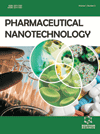
Full text loading...
We use cookies to track usage and preferences.I Understand
This study investigated the potential of Plant-Derived Exosome-Like Nanoparticles (PDENs) as cosmeceutical nanocarriers for treating skin problems, such as scar removal, face rejuvenation, anti-aging, and anti-pigmentation.
Researchers isolated PDENs from Yam Bean (Pachyrhizus erosus) using PEG-based precipitation, gradual filtration, and various centrifugations at low temperatures. Followed by in vitro and in vivo studies using HDF cells and Zebrafish.
The morphology of the YB-PDENs was determined using TEM analysis, they had a spherical shape with diameters of 236,83 ± 9,27 nm according to PSA. The study found that YB-PDENs were stable in aquabidest at 4°C for one month of storage and had ~-26,5 mV of Zeta Potential. The concentration of YB-PDENs was measured using the BCA Assay, and internalization of YB-PDENs to HDF cells was observed using a Confocal Laser Scanning Microscope labelled with PKH67.
As for cytotoxicity, after 24 and 72 hours of incubation with YB-PDENs, the viability of HDF cells remained more than 80%. The study also examined cell migration using the Scratch Assay and found that at 2,5 μg/mL, YB-PDENs had better migration results than other concentrations. Immunocytochemistry showed that collagen expression was higher after 14 days of incubation with YB-PDENs, and melanocytes in zebrafish decreased at each concentration compared with controls.
In conclusion, this study is the first to extract and describe PDENs from Yam Bean (Pachyrhizus erosus), with YB-PDENs having a promising anti-melanogenic effect in skin treatment. This study highlights the potential of YB-PDENs as a promising alternative to depigmentation and skin whitening treatments.

Article metrics loading...

Full text loading...
References


Data & Media loading...

